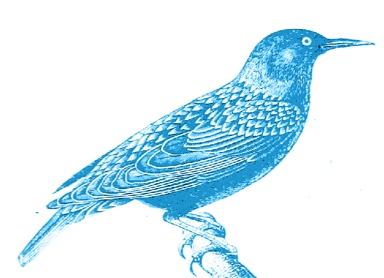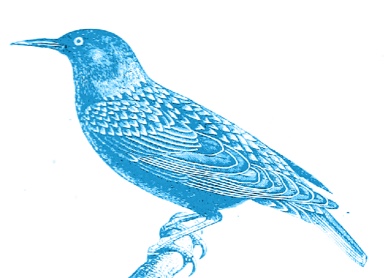When it comes to wildlife, otters have a corner on the cuteness market. They are also fascinating endangered animals with an uncertain fate, and one of them is the subject of a new nature film called Otter 501, in select cities May 11.
Today in The Motherhood, we were joined by Otter 501 star Katie Pofahl, and the film’s executive producer, Mark Shelley. They chatted with Holly, Tropic of Mom; Katie, OC Mom Activities; Aracely, Daytripping Mom; Anne, Upstate Ramblings; and Tammy, Tammy’s Two Cents about all things otters.
Read on for a Q&A, and check the Otter 501 Facebook page for a schedule of film screenings.
What is Otter 501 about?
It’s the story of Otter 501, who is abandoned as a pup, rescued and re-released into the wild as an adult. You see her story unfold through the eyes of Katie Pofahl, a zoologist and recent transplant to Monterey from the Midwest, who (in the film) finds Otter 501 on the beach. Katie provides Facebook updates to her friends and family back home about Otter 501, becomes a volunteer at the Monterey Bay Aquarium, learns “otter spotting” and shares insights about nature, otters and conservation throughout.
Katie Pofahl: “We wanted to change the way natural history storytelling is done – too often it is preach-y and didactic.”
Mark Shelley: “I am glad to see the positive references to the ‘storytellers’ of nature films on television. As the executive producer of Otter 501, one of the things I’m most proud of is introducing a new storyteller – a strong, smart, curious, science-loving young lady. We need those role models.”
Why otters? What inspired the making of the film? (Becki)
Katie Pofahl: “Obviously they are SUPER cute…and that’s an easy way to get folks interested in the ocean. But for us, as filmmakers, science geeks and conservationists, otters are the perfect subject because they are fascinating animals to study and watch. They have it all – complex behaviors, social structures, a critical role in their ecosystems, a torrid history of destruction and recovery…it was an easy match!”
Mark Shelley: “We were approached by a volunteer at The Monterey Bay Aquarium who not only fell in love with the otters on exhibit, but saw that visitors from all over and all ages responded in a special way to seeing the otters. He thought a film would reach people not only about otters, but the need for a clean and healthy ocean. We agreed.”
Who is Otter 501 (the otter whose plight the film follows)? How is she doing now? (Katie, OC Mom Activities)
Meet 501 on video here.
Katie Pofahl: “She was found June 2010 when she was only a few days old. So that makes her nearly 2! She was released April of 2011, after she’d spent a lot of time being nursed back to health, paired with a surrogate mom at the Monterey Bay Aquarium. 501 is still in Elkhorn Slough doing well!”
How long did it take to do the filming for the movie? (Anne, Upstate Ramblings)
Mark Shelley: “It took about a year to get the story right, all the permits and agreements in place, then we did the actually filming over about 10 months. We followed little 501 from the day she arrived at the Monterey Bay Aquarium to the day she was released, about 6 months later. And we spent hundreds of hours filming otters in the wild. Couldn’t have been more fun.”
Do you think the film will make its way into the classrooms? (Tammy, Tammy’s Two Cents)
Katie Pofahl: “The film will definitely be available for classroom education. We are cutting a 50 minute version that can be used for just that reason and we will also make it available along with an educator resources guide. That will go up on our website when we’ve got a chance to get it done.”
 Will the film be released nationally?
Will the film be released nationally?
Mark Shelley: “We are hoping that the cities we are opening in now will show that there is an enthusiastic audience for the film. If theater owners see that, we’ll be able to add new cities. Your interest and requests for screenings in your area mean a lot!”
For a list of where and when the film will be released (beginning May 11), check the events section of the Otter 501 Facebook page.
One of the things that struck me the most was learning that the California otter population had gotten down to only 50! And the current population of more than 2,500 has all grown from those original 50. (Katie, OC Mom Activities)
Katie Pofahl: “Otters are considered a federally threatened species. To get them off the endangered species list, the population would need to be over 3K. However, it’s been shown that the CA coast could hold 16K otters. So the question becomes ‘how many otters do we really need?’ I think that we really need to work to restore the sea otter population to a level that will allow them to play the role in their ecosystem they were evolved for. That’s the only way we can have healthy coastal ecosystems with restored structure (kelp forests!) and function (cleaning our air of CO2!) This might mean a far sight more than 3K otters.”
Mark Shelley: “From about the mid-1930’s to today the population has only grown from those 50 to about 2700 today. There are some biological reasons, but there are also some environmental and policy reasons – things we can do to ensure the population continues to grow and return to a healthy number.”
Mark, you mentioned there are some things we can do to ensure that the otter population continues to grow. Could you give us some examples? (Kayla)
Mark Shelley: “Regardless of where you live, all water eventually runs into the ocean. What we put into our watersheds impacts the health not only of the local watershed, but ultimately the ocean. And the otters are telling us that runoff from ag fields and the things we put down our drains and on our lawns is adversely impacting the coastal ocean. So, basically: we all can think about what ends up in our water.”
Last summer, we rented a boat and roamed around the Morro Bay Estuary and we saw dozens of sea otters. I could have watched them for hours. (Aracely, Daytripping Mom)
Mark Shelley: “You were lucky. The otters have only recently made it to Morro Bay– we’re hoping that they’ll make it further south soon. For now there is a restriction keeping otters from going further south. We hope that ban gets lifted by the end of the year.”
Get your fill of cute otter photos in this Facebook album and Pinterest page.












